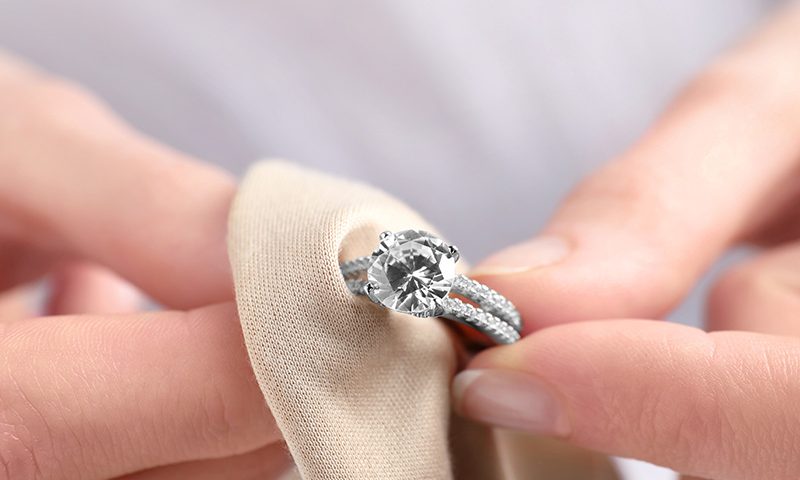Appraisal of Inherited Diamonds, Gold, and Jewelry

The appraisal of inherited diamonds, gold, and jewelry is an important process that allows heirs to understand both the economic and emotional value of their inherited assets. The process includes several stages aimed at determining the precise value of the assets while considering their quality, rarity, and history. Additionally, identifying and preserving their true value ensures that both the family heritage and economic value are preserved for future generations. In this article, we will review the main stages of inheritance appraisal and the importance of each stage in the process.
Stages of the Appraisal Process
- Consulting a Certified Expert:
The appraisal process begins with consulting a certified gemologist. These experts possess the knowledge and tools required for examining diamonds and jewelry at the highest level. It’s important to verify that the expert holds professional certifications and relevant experience.
- Initial Information Gathering
The expert will conduct an initial review of the jewelry, including:
-
- Examining the type of metal (gold, silver, platinum, etc.)
- Identifying the set stones (diamonds, other gemstones)
- Visual assessment of the items’ condition
- Advanced Laboratory Testing
For diamonds and precious gemstones, the expert may use advanced laboratory tests to determine their properties. These tests include:
-
- Determining diamond color
- Measuring clarity
- Examining cut quality
- Measuring carat weight
- Historical Research
When dealing with inherited jewelry, they may have additional historical or cultural value. The expert will conduct research to examine the origin, design, and period in which the jewelry was created. Rare items or those associated with historical figures may be particularly valuable.
- Market Value Assessment
After collecting all data, the expert will assess the current market value. This assessment is based on:
-
- Current trends in the jewelry and diamond market
- Buyer demand for such items
- Global economic conditions and their impact on gold and diamond prices
- Official Appraisal Document
At the end of the process, heirs receive an official appraisal document including full details of the examined assets, their characteristics, and monetary value. This document can be used for legal, financial, or insurance purposes.
Value Preservation and True Value Identification
- Physical Preservation
Maintaining the condition of jewelry is crucial for preserving its value. Antique jewelry is sensitive to time-related damage, so periodic maintenance, professional cleaning, and proper storage conditions are essential.
- Hidden Value Identification
The value of jewelry and diamonds isn’t always apparent. In-depth historical research or gemological examination may reveal rarity, unique origin, or exceptional quality that increases their market value.
- Maintaining Updated Appraisal Documents
Keeping updated appraisal documents allows tracking changes in asset value according to market changes and economic conditions.
Discretion and Process Security
- Private and Discreet Service
Every appraisal process is conducted in a private and protected environment. Meetings are scheduled in advance and held in secure rooms ensuring complete client privacy.
- Jewelry Security
During appraisal, jewelry is kept under close and secure supervision. The process includes using protected safes and advanced security measures to prevent any risk of loss or theft.
- Documentation and Information Protection
All data and results are stored in encrypted and protected databases to maintain client information confidentiality.
- Insurance During Appraisal
The jewelry is insured throughout the process, so even in case of unexpected damage, the client is fully protected.
Secure and Discreet Process Outline
The inheritance appraisal requires maximum discretion and security to protect the items and client privacy. Here are the main steps for a secure and discreet process:
- Scheduling private and secure meetings
- Receiving items and organized documentation
- Examination in a secure laboratory
- Using safe storage methods
- Process insurance
- Documentation and transparency
- Item return
Real-Life Examples
- Rare Family Diamond
A family that inherited a diamond set in an antique ring discovered it was a rare 5-carat diamond. The diamond proved special due to its clear color and quality cut. After professional appraisal, its market value was found to be over one million dollars. The family chose to keep the diamond for future generations and use it as a central stone in a new family piece.
- 19th Century Gold Jewelry
A woman who inherited Victorian-era designed gold jewelry consulted experts for examination. The jewelry was discovered to be unique handmade pieces set with rare gemstones. Beyond their material value, they had significant historical value as they were connected to a noble English family. The jewelry sold at auction for twice the estimated value, allowing her to fund her children’s education.
- Antique Pearl Necklace
An heir found a pearl necklace in excellent condition that belonged to his grandmother. Professional examination revealed the pearls were natural and particularly rare, set in 18-karat gold. The total value of the necklace was over $250,000. The necklace was kept in the family as a symbol of family heritage.
- Rare Gold Watch
A family inherited a rare Art Deco period gold watch. The watch was designed by a luxury brand and was in almost new condition. After professional appraisal and historical research, the watch sold at a private event for over a million dollars, far exceeding the family’s expectations.
Conclusion
The appraisal process for inherited diamonds, gold, and jewelry is an important tool that provides heirs with accurate information about their assets’ value. Through consulting certified experts, using advanced testing, and historical research, the true value can be identified and preserved for future generations. Thus, the assets not only serve the present but also form a bridge to the future.
